Size matters! – VOLK vehicles are used in the construction of mega-yachts
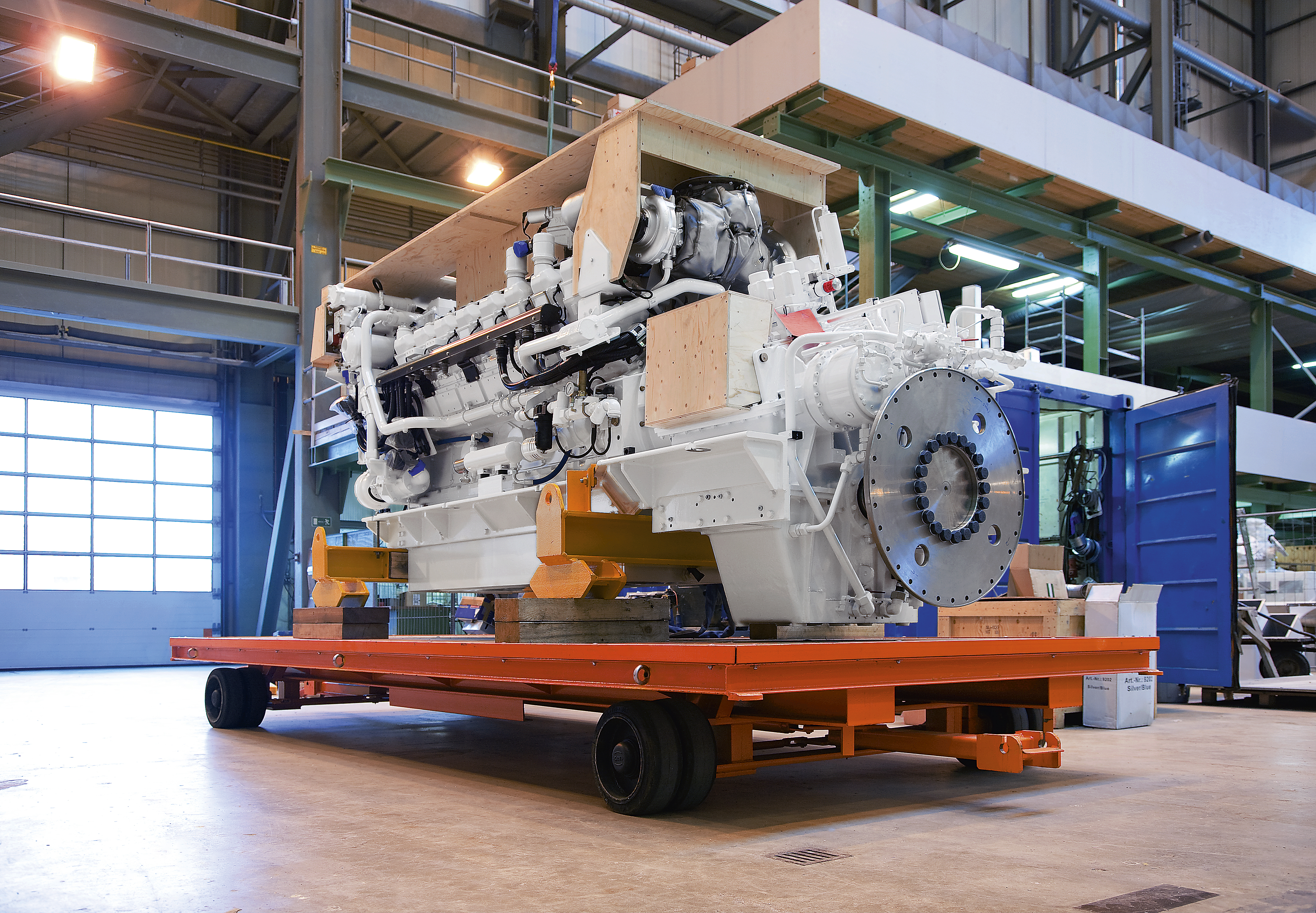
The financial crisis of 2009 has rendered many dogmas invalid. One of those principles now proven to be wrong is the belief that luxury goods are less vulnerable to economic downturns than other segments. Only the market segment for so-called mega-yachts, oceangoing yachts with a length of more than 200 feet (approx. 60 meters), has proved resistant to economic swings.
The reason for this may be that luxury yachts are often regarded as the ultimate status symbol. Wealth and prestige of the owner are demonstrated here in an archaic but also measurable way, namely in feet or meters. And while the financial crisis naturally hasn’t left the fortunes of the super-rich unscathed, leading to turbulence in the wealth ranking lists of the relevant business magazines, the ranking lists of the yachting magazines have proved more resistant to the economy: Here the ranking order of the super-rich remained largely stable.

Abeking & Rasmussen – The shipyard enjoys an excellent reputation for its first-rate design and high technical quality
Since 2013, the top rank has belongs 180 meter long “Azzam“, the private yacht of the Sheik Chalifa bin Zayid Al Nahyan, President of the United Arab Emirates. Ranks three to five are also in the hands of ruling Arabian families. The Top Five are made complete by the yachts of two Russian oligarchs. Germany, however, is far behind in the national ranking.
As a consolation, most of the megayachts are at least produced by German shipyards. One of the most renowned is Abeking & Rasmussen in Lemwerder near Bremerhaven. The shipyard enjoys an excellent reputation in its circles for its high-class design and the outstanding technical construction of the yachts manufactured here.
VOLK Industrial Trailer with Caterpillar 3516 ship engine – The 16-cylinder unit has a rating of almost 1.500 KW, weighs approximately eight tons and is painted completely white for optical reasons
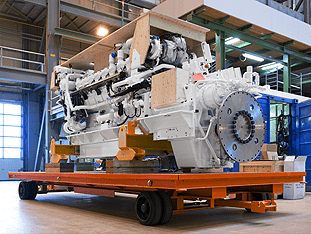
The yachts are produced in five gigantic hangars directly on the banks of the Weser. The ships’ hulls are built completely on rail cars, so that they can be moved out of the hangar when finished and then set into the water with a hoist. However, before this can happen, a great deal must be done: Several hundred employees work for up to three years on the construction of a yacht. The hull is usually manufactured completely of steel. The mounts on the yacht, on the other hand, are made of aluminium in order to achieve a good center of weight.
Just the priming, grinding and painting of the gigantic steel hull takes up to three quarters of a year. The reward for this toil is an absolutely smooth, perfect hull surface. Like at a construction site, the multi-story hull is surrounded by a scaffolding during the entire production process. During the grinding and painting work, this is additionally enveloped in plastic foil and sealed so that paint vapors and fine dust can be suctioned away more easily. The giant plastic hood, illuminated inside, reminds you in this assembly phase of a creation of the wrapping artist Christo.
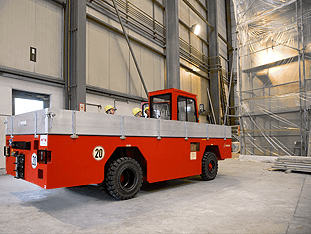
VOLK Diesel Platform Truck DFW 6 with load-through platform – In the background of the picture, the scaffolding enveloped in plastic foil can be seen, with which the building-high hull receives its last finishing touch
The interior construction of the ships is usually carried out in close agreement with the interior designer of the owner. Here precious woods, natural stones and and a great deal of leather are used. Golden faucets, on the other hand, are not often to be found. These classic signs of wealth have had to make way for a new practicality in the form of increased use of chrome and stainless steel.
The 78-meter yacht Eminence at anchor in the Weser – The striking contrast between the elegant boot design and the sober architecture of the shipyard buildings already offers a hint: The place of birth of this mega-yacht may be Lemwerder, but its real home is the most beautiful harbors of the world
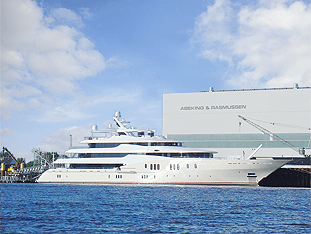
For the transport of the yacht components and parts, Abeking & Rasmussen relies on diesel platform trucks and industrial trailers from VOLK. While sometimes entire ship engines with a weight of up to 15 tons are transported on the trailers, the diesel platform truck is used more for “light“ loads of up to six tons. A load-through platform allows here for the transport of oversized components and long materials. To make the entry into the inside of the shipyard halls possible, the vehicle is equipped with a diesel particle filter. A road permit allows for the crossing of a public road which divides the shipyard area.
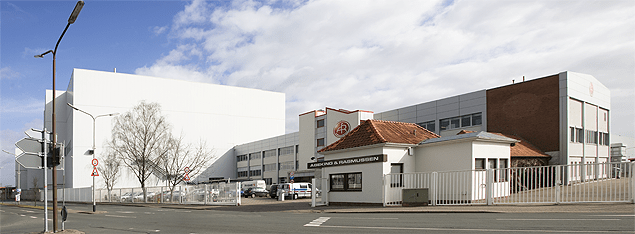
The shipyard premises of Abeking & Rasmussen in Lemwerder – In each of the five gigantic hangars, a megayacht is produced in two to three years of handicraft
Especially important for Abeking & Rasmussen’s purchase decision was also the high drawbar pull of 20.000 N. An average of once or twice a year, the vehicle is used for an important task: Since the wheel bearings of the rail cars sometimes become stuck during the long construction period, the vehicle, which can easily hold its own with a 30-ton diesel tow truck in terms of drawbar pull, must help pull the rail car free when a yacht construction has been completed.

VOLK Fahrzeugbau GmbH
Stahlstraße 15
88339 Bad Waldsee
+49 7524 9709 0
info@volk.de
